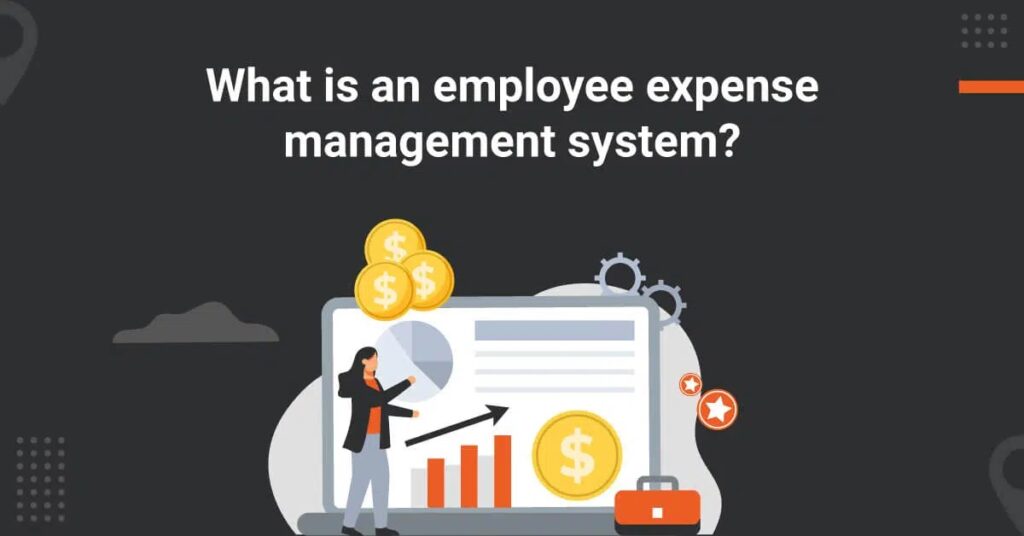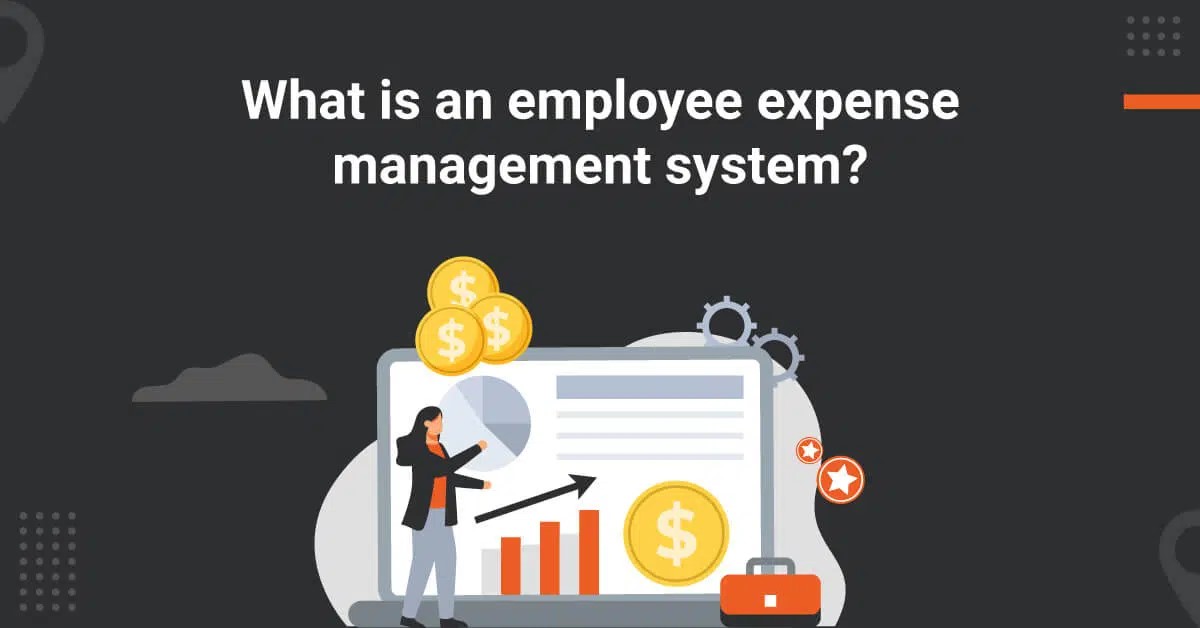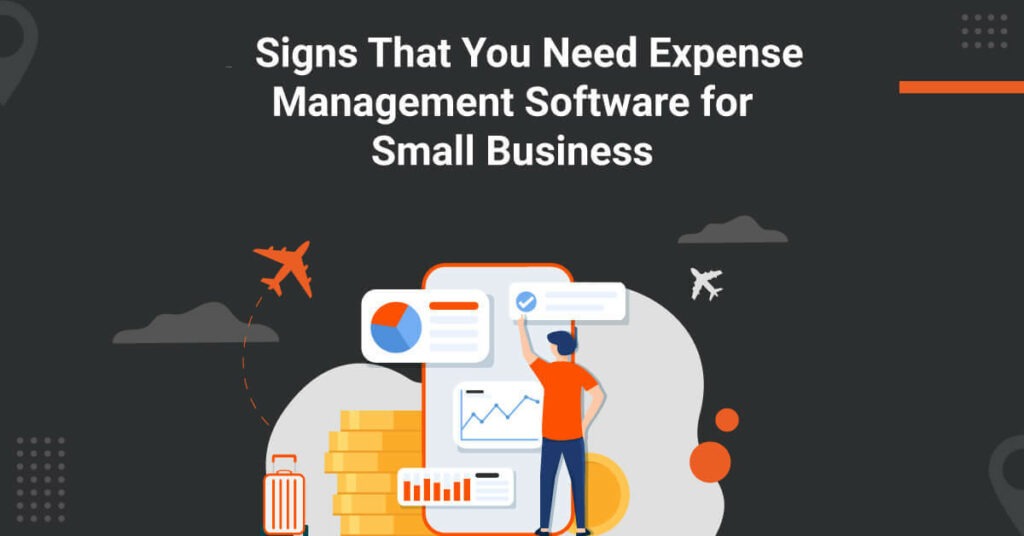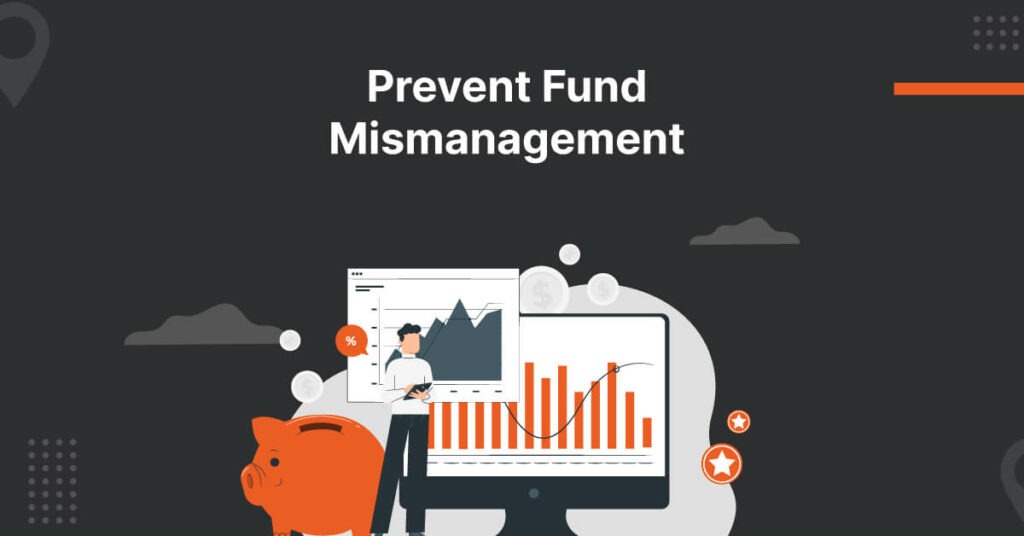
One of the most common challenges that employees face in any organization is expense filing. This is because creating and submitting expense reports manually for every expense incurred can be tedious and time-consuming.
Therefore, it is essential to create an employee expense management system for better expense processing and reimbursement. Let’s learn in detail about what is an employee expense management system and how to manage it seamlessly.
What is an Employee Expense Management System?
There are different types of expenses that a company incurs to undergo business operations. One such expense is employee expense. Employee expenses are the expenses incurred by the employees for carrying out business tasks.
For example, the employees spend some amount during business travel, be it client meetings or business conferences. The companies need to pay the employees back for these expenses.
However, employees must first submit their bills as expense reports to compensate for the amount spent. These reports are then validated, approved, and reimbursed.
Therefore, an employee expense management system is the process of tracking and maintaining all the expenses that involve expense submission, approval/denial, and reimbursement.
Why is Employee Expense Management System Important?
Employee expense management is essential for any company whose employees conduct business activities outside the workplace. Whether a business lunch with clients or attending a business conference, the expenses must be documented, approved, and reimbursed by the company.
With an effective employee expense management system, companies can track how much money is being spent by employees and for what purpose. This helps businesses minimize cost leakages while staying compliant with tax regulations.
Moreover, it reduces fraud and makes the company audit-ready, enhancing overall financial productivity.
Types of Employee Expenses
Almost every company has times when they have to reimburse employees for their expenses. Whether it is internet or phone bills, traveling to an expo/conference, or health and wellness, it is essential to understand the different types of employee expenses.
The different types of employee expenses include:
1. Mileage Expenses
Mileage expenses are the expenses that organizations pay or reimburse the employees for using their vehicles for business travel.
This type of reimbursement includes the costs for fuel, maintenance, repairs, and vehicle insurance. Most organizations use the IRS mileage rates while reimbursing employees for using their vehicles.
Some valid mileage reimbursements include driving to an airport or bus station, driving to an off-site location for a client meeting or conference, traveling to a temporary job location, etc.
2. Travel Expenses
Any business trip an employee undertakes for business activities such as sales meetings or attending a workshop comes under this category.
While an organization generally books a flight, hotel room, and rental car for employees in advance, other incidental expenses happen during the trip. So, employers can offer employees a fixed per diem allowance for such expenses.
The General Services Administration establishes per diem rates every year on the 1st of October for different regions of the US.
3. Medical expenses
Medical expenses include any costs incurred in treating a disease. Most organizations offer employee benefits for medical insurance. Under these benefits, companies will reimburse employees for medical bills such as medical treatment or hospitalization.
The medical reimbursement guidelines can vary from one country to another. Some countries like the US have reimbursement policies defined by certain authorities.
Organizations can choose from the common HRA (Health Reimbursement Arrangement) to cover their employees’ medical expenses.
The three types of HRAs include:
- Qualified Small Employer HRA (QSEHRAs)
- Individual Coverage Health Reimbursement Arrangements (ICHRAs)
- Group Coverage Health Reimbursement Arrangements (GCHRAs)
4. Remote Work Expenses
A remote work expense is a monthly expense company reimburses employees to help them work from home or remote locations.
With many people working from home, providing a remote work allowance is a great perk for employees. For instance, employees can pay for their internet bills as it uses a lot of bandwidth for work purposes.
You can also reimburse employees for their phone bills if they use the phone for various client calls.
5. Miscellaneous Business Expenses
Expenses like stationery, entertaining the clients for food and drinks, paid education or training, or any other miscellaneous expenses fall under this category.
Types of Employee Expense Management Systems
With many types of expenses, there are also different types of employee expense management systems, and they are:
Paper Forms
Paper forms are the traditional and outdated method of managing expenses. This expense management is done manually by collecting paper receipts and submitting them for approval.
The downside of this method is a massive load of paperwork circulating for request and approval.
Spreadsheets
A spreadsheet is a worksheet for managing, tracking, and maintaining data. Various organizations are trying to reduce their reliance on paperwork by using this method.
However, this method requires manual data entry. Hence, the data can get muddled if not handled correctly, leading to incorrect results.
Expense Management Software
Expense management software is an innovative and efficient tool for managing expenses. The software automates expense management and increases financial productivity through digital receipt management, expense tracking, customized dashboards, etc.
Expense management software gives you real-time visibility and control over all expenses.
Manual vs. Automated Employee Expense Management System
Manual Process
Managing employee expenses manually for the entire company can get tiring and cumbersome as it takes days or weeks to process. Here, the employees should collect all their receipts by month-end/quarter, send them for approval, and then send the approved receipt to the finance team for validation.
If any errors are detected, the report is sent back to the employees for correction, and the entire process repeats.
Hence, the manual employee expense management system can be time-consuming, error-prone, costly to sustain, vulnerable to fraud, and challenging to comply with policies.
What Automation Brings to the Table
By automating the expenses, companies can simplify the report submission process, eliminate paper, reduce errors and fraud, and reimburse employees faster.
Employees just need to upload images of the receipts, and the software captures the essential details. It also provides timely and accurate information about employee spending across the organization.
What does an Expense Management Software do?
Receipt Tracking
- The software lets employees upload receipts, update, and submit expense reports with information about their spending.
- All these receipts are saved in a centralized platform so that users and approvers can easily access and track them.
- The software also helps identify employee spending trends and patterns.
Policy Compliance
- The expense management software allows employers to modify and add policies as per the company’s budgetary goals and requirements.
- The software has various built-in features that help companies immediately identify, track, and reduce policy violations.
- In case of a breach, the user and approver get a notification immediately.
Streamlined Approval Process
- The approvers can look into and verify a flagged expense without going through the bundles of paper receipts and policy documents.
- The software also identifies the reason for flagging the expense. This helps in faster verification and approval process.
- The software makes the approval process more flexible and adaptable to policy changes and workflows.
- With real-time time policy notifications, approvers can instantly approve or reject expenses without wasting time.
Features of Employee Expense Management Software
After understanding what employee expense management solution is, let’s take a look at its features:
1. Device-agnostic
This feature allows employees to file their expenses on the go, whether mobile or on the web. Similarly, it will let approvers approve or reject the expenses from their preferred device.
2. Receipt Scanning
This is among one of the essential features of the software. The feature allows users to click and upload the receipt images directly to the software. Moreover, the fields in the receipts are scanned using the OCR technology and auto-filled into the expense report.
3. Audit Trails
In case of a violation, employees can come up with multiple reasons for violating the process.
Therefore, documented proof of this will help businesses stay audit-ready. The software documents all communications, making the process more seamless by providing you with a complete audit trail.
4. Intuitive Dashboard
The software’s dashboards provide employees and managers with a visual format. The format makes it simpler for them to understand and analyze the expense data.
They also help finance teams identify areas where they can tighten spending controls, gain efficiencies and strengthen the bottom line.
Suggested Read:
20 features to look out for in a business travel expense software
Benefits of Expense Management Software
Employee expense management software addresses many issues and challenges during expense filing, tracking, and reporting. The benefits of expense management software include improved productivity, employee satisfaction, compliance, and cost savings.
Here’s what companies can expect if they use expense management software:
1. Saves Time
Business expense management system saves employees’ and the finance team’s time. The employees can directly upload the receipt image on the software by choosing the correct category.
Moreover, the finance team can validate expenses within minutes due to clear data visibility.
2. Reduced Errors and Delays
The expense management software improves accounting accuracy as there is no room for manual errors.
Moreover, the software can highlight mistakes, and duplicate entries, prevent overpayment and alert the managers or employers if the numbers seem too high.
3. Faster Employee Reimbursements
Expense management software allows employees to submit receipts or documentation without delay. The managers can quickly review and easily approve these claims.
Thus, the reimbursements are done faster, and the money is directly credited to employees’ bank accounts through ACH payments. This process avoids the frustration that comes with errors and delays, thereby enhancing employee satisfaction.
4. Enhanced Fraud Prevention
With expense management software, fraud detection is more effortless. The AI-based system automatically detects duplicate expenses, wrong expense file receipts, etc. The finance department no longer needs to manually cross-verify every payment, thus saving countless hours.
Selecting the Right Expense Management Software
With so many expense management software options in the market, it can be pretty challenging to select the right one.
Below are a few points you can keep in mind while investing in a good expense management software include:
1. Determine your Needs and Goals
Choosing the right expense management software is essential. Therefore, ensure that you invest in software that fulfills your requirements.
- Is the software mobile-friendly?
- Are employees able to easily install, scan and upload receipts?
- Is the software affordable and scalable?
- Does the software get regular updates?
- What is the user experience like?
- Is the software compliant with all guidelines and policies?
2. List the Features you Require
Create a list of features you need in expense management software. This helps you filter down your best options among multiple software solutions available in the market.
3. Include Essential People
Involve finance managers, directors, and people who work closely with the software in the decision-making process. Their insights and experience will give you an idea of the simplicity or complexity of software, and thus you can decide accordingly.
4. Technical Support
Choose a software provider that offers 24/7 technical support across multiple mediums if any problem occurs.
For example, if a receipt image doesn’t get or the employee cannot submit it for approval due to technical issues. Then, having technical support that can quickly resolve the issue will avoid such problems.
Suggested Read:
How Important is Business Travel Support for Travelers
5. Data Security
As expense data contains critical information, data security is an essential parameter when choosing expense management software. Therefore, you should choose a software solution with a robust data security infrastructure.
Make sure that the software has certain certifications, such as PCI-DSS and ISO-27001. It should also be cloud-based so that the data is protected in remote data centers.
Optimize your Employee Expense Management System
With an efficient employee expense management system, companies can maintain accurate financial records, improve employee productivity, enhance employee satisfaction, and build the company’s overall growth.
Itilite expense management software automates your expense processes by integrating expense filing, approvals, and reimbursements in one platform.
Features such as digital receipt management, real-time fraud detection, automatic expense report generation, and much more help you optimize the employee expense management system.
Frequently Asked Questions
Employee expense management software is a digital solution designed to streamline the process of tracking, managing, and reimbursing business-related expenses. It centralizes expense reporting, enforces policy compliance, and facilitates efficient reimbursement. This enhances financial control and transparency within organizations.
Employee expense management software benefits your organization in many ways. It automates expense tracking and reporting, reduces manual errors, ensures policy compliance, and more for better financial management and decision-making.
Yes. Employee expense management systems often offer integration capabilities with existing accounting systems and other enterprise systems such as HRMS, SSO, CRM systems, etc.

















 and then
and then